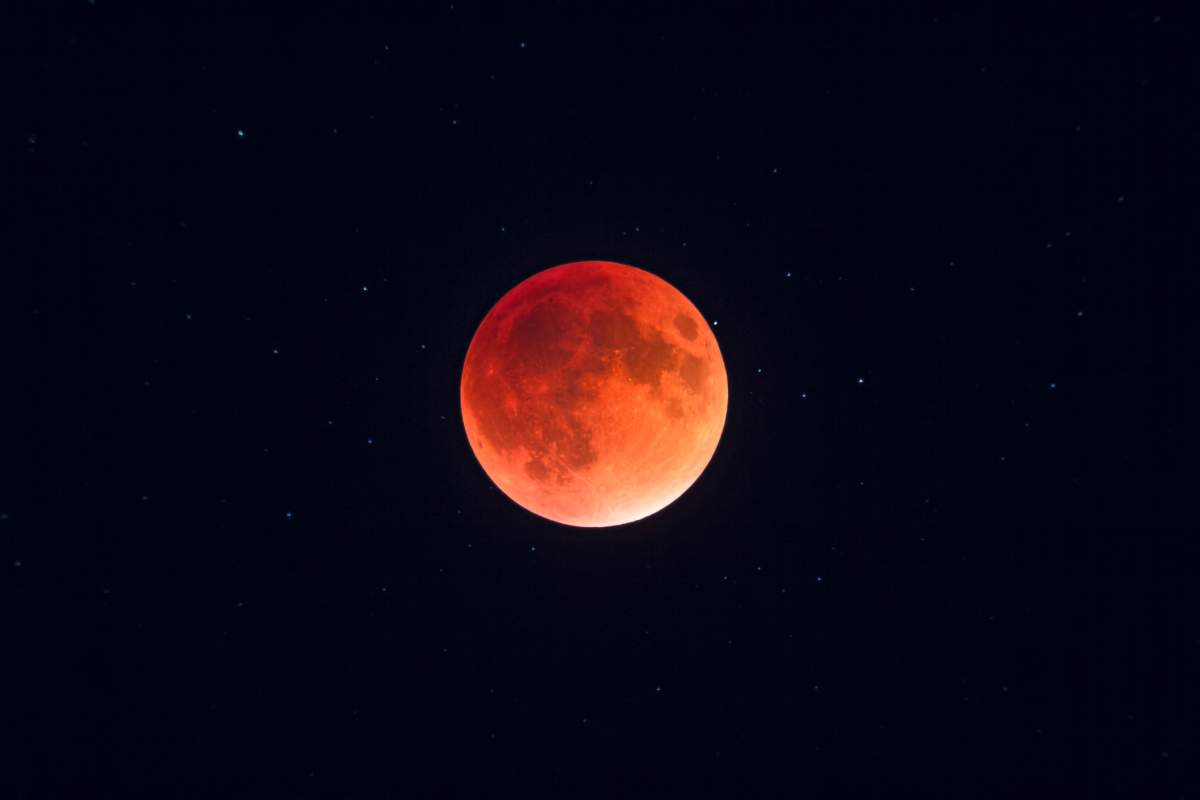This coming Wednesday, the moon will pass fully through the shadow of the Earth, which will engulf the moon with a blood-red shadow for about an hour and 15 minutes.

This phenomena is called a total lunar eclipse, which will be accompanied by the second full moon of the month — or a blue moon — as well as a “supermoon,” which will make it appear bigger than usual.
Depending on where you are in the world, you may be able to catch all or part of this spectacular light show.
Western Canada
Those who live on the West Coast, particularly those in Western and Northern Canada, will have prime viewing of the lunar eclipse from beginning to end. For Canadians who live in British Columbia and the Yukon, the eclipse will begin at around 2:51 a.m. PST.
NASA says in a blog post that the moon will move into the “umbra” or red shadow, at about 3:48 a.m. PST, and the moon will appear completely red just before 5 a.m. PST. At 6:05 a.m. PST, the event will conclude.
Central Canada

Get breaking National news
For those living in Eastern Alberta, Saskatchewan and Manitoba, you’ll also be able to enjoy the majority of the eclipse, and the totality of the red moon. In Manitoba, the eclipse will begin at 4:51 a.m. CST, and the moon will begin turning red at 5:48 a.m. CST.
By 6:51 a.m. CST, the moon will have turned completely red and will remain red until 8:07 a.m. CST. This timeline is identical for Canadians living in Saskatchewan. In Alberta however, the start and finish times of each phase are a little earlier.
The penumbra eclipse will begin at 3:51 a.m. MST, and will appear completely red by 5:51 a.m. MST. By 7:07 a.m. MST, the total lunar eclipse will end, followed shortly after by the partial eclipse.
Eastern Canada
Eastern Canadians will have a harder time getting in on the action.
For those living in the Eastern Time Zone, including Canadians in Ontario and parts of Quebec, the eclipse will begin at around 5:51 a.m. EST, and will have turned partially red by 7:30 a.m. EST. This however, is as red a moon as anyone in Ontario and further east will see. The rest of the event will not be directly visible.
The Maritime provinces unfortunately, will likely not be able to view the eclipse at all.
Tips for getting a better view?
You won’t need viewing glasses for this event, as NASA states it will be safe to view with the naked eye. Regardless, experts have a few tips for maximizing the experience.
One NYC-based photographer, Stan Honda, told ABC News that if you want to photograph the event, a smartphone is probably not your best bet, as the phone screen will make the moon appear smaller. If you have no other choice, he says, he recommends adjusting your phone manually to avoid the moon looking like a “big blob.”
Gordon Johnston, NASA lunar blogger, said in a post that climbing up to a high place with a clear view to the west will help you get the best possible view of the moon’s red hue.
To check when, and if, the lunar eclipse will be visible in your city, click here.
For those who don’t live in an area where the eclipse will be visible, the entire event is being live streamed here.
































Comments